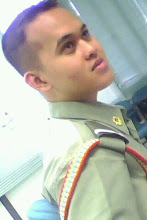Putrajaya atau nama rasminya Wilayah Persekutuan Putrajaya ialah pusat pentadbiranKerajaan PersekutuanMalaysia bagi menggantikan Kuala Lumpur. Putrajaya, bandaraya pintar dalam taman terletak 25 kilometer di selatan Kuala Lumpur merupakan sebuah bandaraya futuristik yang menempatkan pusat pentadbiran Kerajaan Persekutuan.
Daripada beberapa tempat yang dikaji dan ditinjau di Selangor, Negeri Sembilan dan Perak, Kerajaan telah memilih Perang Besar kerana ianya dekat dengan Kuala Lumpur dan terletak di antara Kuala Lumpur dengan Lapangan Terbang yang baru di Sepang, dengan jarak yang lebih kurang sama. Perancangan yang teliti telah dibuat oleh satu konsortium empat belas arkitek Malaysia dengan diketuai oleh arkitek Jabatan Kerja Raya. Ibukota pentadbiran ini dirancang untuk menjadi sebahagian daripada `Multimedia Super Corridor' yang menyambungi lapangan terbang antarabangsa baru di Selatan dan Kuala Lumpur di Utara dengan mempunyai semua kemudahan yang tercanggih dan terkini.
Dari sebuah tempat terpencil yang dikenali dengan nama Prang Besar, kawasan ini melonjak membangun dengan nama Putrajaya mulai 12 Oktober 1994. Berbanding dengan Kuala Lumpur, sebuah bandar tinggalan penjajah, Putrajaya dibangunkan oleh anak bangsa sendiri dengan bercirikan budaya tempatan. Mula dibina pada 16 April 1995, Putrajaya akan menggunakan aplikasi teknologi maklumat (IT). Dengan terbinanya Putrajaya, suatu hari nanti Kuala Lumpur, Putrajaya, dan Lapangan Terbang Antarabangsa Kuala Lumpur (KLIA) akan menjadi Bandar gergasi setanding dengan Tokyo dan Yokohama di Jepun.
Untuk mencapai matlamat ini, Wetland Putrajaya telah dibina untuk menyingkirkan sedimen dan membersihkan aliran permukaan yang tercemar sebelum ia memasuki tasik. Sesuai dengan lokasinya di tengah-tengah bandaraya, Wetland Putrajaya menjadi titik penting dalam membawa rakyat untuk bersama-sama mencapai matlamat dari segi rekreasi, pendidikan dan penyelidikan. Lokasinya yang berada ditengah-tengah Koridor Raya Multimedia, Putrajaya seluas 4,931 hektar ini dibangunkan dengan kos RM20.5 billion mengandungi Pusat Pentadbiran Kerajaan Persekutuan, Perumahan, Kemudahan komersial, kemudahan sosial dan kemudahan keagamaan.
Pembiayaan projek ini tidak akan membebankan negara kerana cara-cara `financing' yang tertentu akan digunakan. Sebahagian daripada wang yang diperlukan sudah pun diadakan kerana beberapa projek bangunan Kerajaan di Kuala Lumpur telah ditangguh untuk dibina di Pusat Pentadbiran baru ini. Pembinaan Pusat Pentadbiran ini adalah juga satu pelaburan yang besar oleh Kerajaan Pusat dan akan membawa banyak manfaat kepada Kawasan Perang Besar dan sekitarnya. Bersama dengan Lapangan Terbang Antarabangsa Sepang ia akan membawa pembangunan yang pesat kepada wilayah yang terpencil ini. Hari ini pun penduduk berdekatan sudah menikmati banyak rahmat.
Putrajaya dibina oleh anak bangsa Malaysia dengan memberi fokus kepada seni reka tempatan. Selain berperanan khusus sebagai Pusat Pentadbiran Kerajaan Persekutuan, Putrajaya turut diilhamkan sebagai sebuah bandar yang terurus, bersemangat, bertenaga dan makmur, bagi memenuhi keperluan sosio-ekonomi, rekreasi dan rohaniah penghuni, warga kerja dan pelawatnya. Untuk itu, perancangan pembangunan Putrajaya bukan sahaja berfokus untuk memenuhi ciri-ciri bandar sejahtera yang selamat, bersih dan indah untuk didiami, bekerja dan berekreasi; malah penggarapan aspek nilai-nilai murni di kalangan warganya turut diberikan penekanan penting bagi menggalakkan aktiviti ekonomi serta kemudahan perbandaran berkembang secara terurus tanpa mengenepikan keperluan generasi akan datang.
Memandangkan bahawa Putrajaya adalah sebahagian dari ibukota sebuah negara maka Kerajaan berpendapat ianya eloklah diberi nama yang ada kaitan dengan sejarah Malaysia yang merdeka. Dengan itu pusat pentadbiran Malaysia ini diberi nama Putrajaya bagi mengingati Bapa Malaysia, Almarhum Tunku Abdul Rahman Putra, Perdana Menteri Malaysia yang pertama. Justeru itu, pada hari ini, 20 Julai 1995 bersamaan 22 Safar 1416, segala hasrat Kerajaan ini akan dimetrikan di Upacara Menandatangani Perjanjian Berhubung Dengan Penubuhan Pusat Pentadbiran Kerajaan Persekutuan di Putrajaya di antara Kerajaan Persekutuan dengan Kerajaan Negeri Selangor. Perjanjian ini juga merupakan satu detik sejarah yang mana persetujuan yang dicapai mengikut Fasa (8) perkara 83 Perlembagaan Persekutuan, akan membolehkan Putrajaya di dalam Daerah Sepang di Negeri Selangor diwujudkan sebagai satu kawasan Pihak Berkuasa Tempatan dan Pusat Pentadbiran Kerajaan Persekutuan yang baru.
Pada 10 Mei 1999, Kompleks Pejabat Perdana Menteri mula beroperasi di Putrajaya. Putrajaya menjadi penanda aras kepada pembangunan dan pentadbiran sesebuah bandar baik di peringkat dalam negara mahupun di peringkat antarabangsa.







